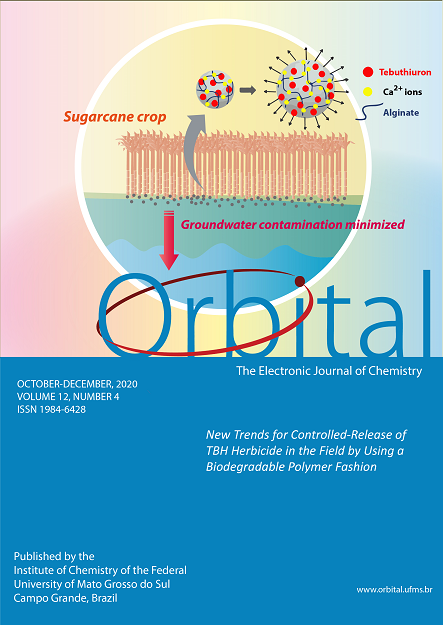Synthesis of Lapachol and 4-Hydroxyquinazoline Derivatives as Candidates for Antimalarial Activity
- febrifugine,
- quinazoline,
- lapachol,
- Malaria
Copyright (c) 2020 Orbital: The Electronic Journal of Chemistry

This work is licensed under a Creative Commons Attribution-NonCommercial-NoDerivatives 4.0 International License.
Abstract
Malaria is a disease that still plagues many tropical countries, affecting around 228 million people and with approximately 430 thousand deaths worldwide. The resistance of the causative protozoan against the existing antimalarials has been increasing, including for combination therapies based on artemisinin, a first-line treatment against malaria. Therefore, the search for new antimalarial agents becomes essential. Lapachol and febrifugine are substances with antimalarial activity with the potential for the development of new antimalarials, but with relevant cytotoxicity. In this work, we propose the synthesis of two derivatives, one from lapachol and the other from febrifugine, aiming at an improvement in antimalarial activity and a decrease in cytotoxicity. Lapachol was isolated from the sawdust of purple ipe and derivatized in a twostep synthesis, providing an unprecedented derivative in 25% yield overall. The febrifugine derivative was synthesized from 4-hydroxyquinazoline in 61% yield (2 steps). Both were purified by column chromatography and characterized by 1H, 13C NMR, HSQC and HMBC. Also, the parameters as clogP, the presence of atoms capable of acting as acceptors or donors of hydrogen bonds, molecular mass, topological surface area, rotatable bonds were determined in order to predict the solubility and bioavailability of this compounds as drug candidates.

